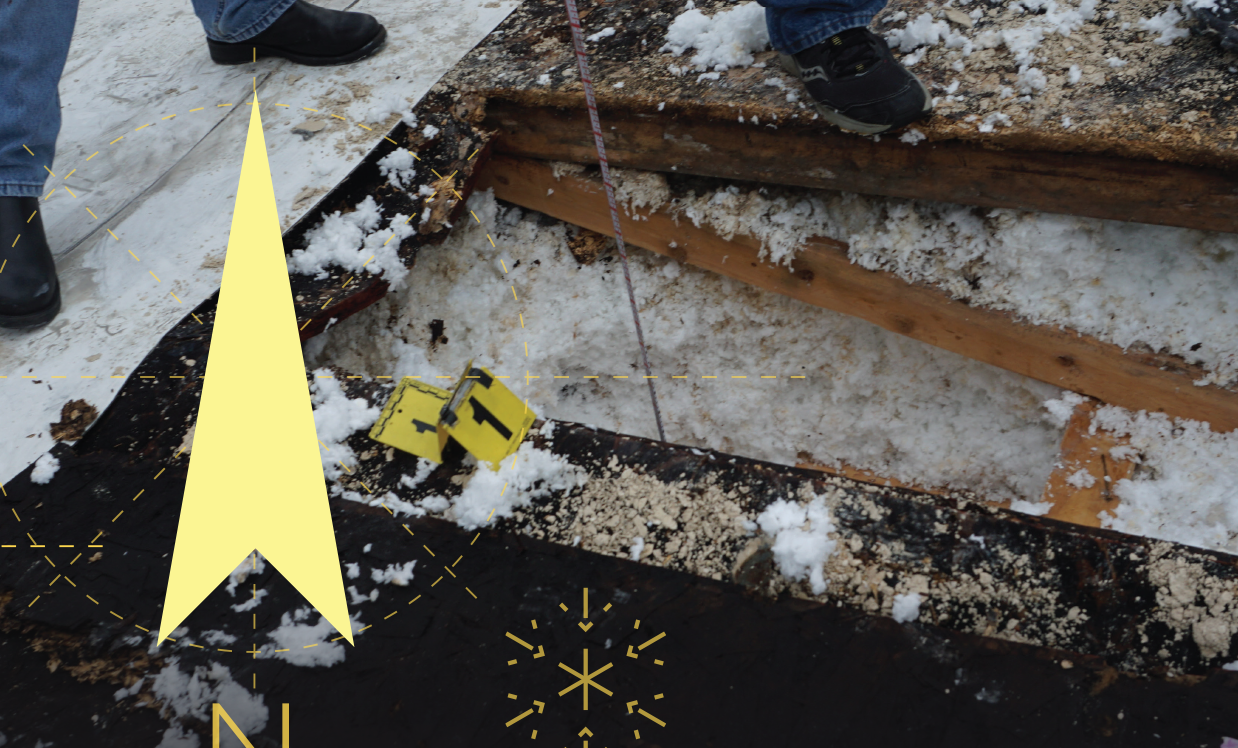Too often, NRCA hears about a roofing contractor being cited for an Occupational Safety and Health Administration violation under 29 CFR 1926, “Safety and Health Regulations for Construction,” when the contractor believed he or she had been in compliance.
Safety and OSHA compliance can be tricky because of the number of variables involved. To help your workers stay safe and you avoid OSHA violations, NRCA offers tips to help you ensure job sites are set up properly and employees are using the most recent innovative safety solutions.
Job hazard analysis
In some cases, contractors say they tried to include fall protection in their safety plans but couldn’t because of the type of roof involved. In other cases, a hazard wasn’t detected before work began. Although these reasons may seem valid, OSHA likely will not find them to be acceptable.
OSHA’s General Duty Clause states employers must ensure employees have a workplace free of recognizable hazards.
One way to ensure your job sites are set up properly is to incorporate a job hazard analysis, such as NRCA’s job hazard analysis template, which is offered free for NRCA members on NRCA’s website, nrca.net. NRCA’s job hazard analysis template helps you detect and eliminate hazards on a job site before work begins.
A job hazard analysis helps to determine what hazards may be present on a particular job and allows the user to address ways to control those hazards before the job begins. NRCA’s template provides users with a variety of common issues seen on roofing job sites in an easy-to-use format that can be used to help on any job.
PPE
Personal protective equipment will not eliminate hazards, but when worn properly, it will protect against them. But finding adequate PPE solutions requires research and planning, and that is where a robust safety program comes into play. And new product developments offer more options than before.
Harnesses
PPE citations remain one of the top 10 OSHA violations for the roofing industry. As the figure shows, two of the top 10 violations specifically focus on PPE. If we were to dive into some of the fall protection-related citations, many of them are specific to systems, including the use of harnesses. Unfortunately, this is a story I can relate to from personal experience. When I was working for F.J.A. Christiansen Roofing Co. Inc., Milwaukee, one of the first employees I had reporting to me complained the harness issued to him was uncomfortable and the leg straps bothered him during the workday. My focus was on enforcement, so I made him wear the harness rather than looking for a better solution. The employee took it upon himself to loosen the leg straps. When the employee slipped and fell, the system worked as intended. However, because the straps were too loose, the employee was seriously injured in the fall. An OSHA citation was issued and consisted of three violations: a training violation and two systems and criteria violations. Could these citations have been avoided? Yes!
Fall-protection harnesses have evolved to be more comfortable and user-friendly. For example, Cranberry Township, Pa.-based MSA Safety Inc., a manufacturer of personal fall-arrest equipment, has created a series of V-FORM™ full-body safety harnesses (see Photo 1) that allow for greater upper-body movement, something lacking in harnesses of the past. And FallTech,® Compton, Calif., has created its FT series of harnesses (see Photo 2) designed to fit workers while eliminating fatigue by adding padding in strategic locations.
Other manufacturers are addressing weight, padding, adjustability and sizing of harnesses to help workers feel more comfortable. Instead of one-size-fits-all manufacturing, companies are taking into consideration end-users’ opinions to create harnesses that are more worker-friendly.
Although prices increase with more specialized harnesses, ranging from $45 to $250 per harness, Dave Hood, executive vice president of Emergent Safety Supply, Batavia, Ill., says selecting the right PPE far outweighs the cost.
“Choosing the correct PPE will make your workforce more productive,” Hood says. “It’s not a matter of which one is going to cost less. Instead, consideration of comfort and wearability should be the key to selection. A harness is only going to protect a worker if it’s being used.”
Head protection
Just like fall-protection harnesses, eyewear has evolved to be more comfortable and user-friendly. When I started in the industry 25 years ago, there were only a handful of safety glasses available, and they were bulky, ugly and came in one-size-fits-all styles. But soon, safety equipment companies began to focus on comfort and style as well as protection. Safety glasses began to resemble more fashionable sunglasses and eyeglasses. Not only did the safety equipment companies make safety glasses more stylish but they also made them lighter weight and more comfortable so workers more likely would wear them on the job.
Throughout the years, there also have been many advancements made to helmets. Many contractors are switching from traditional hard hats to newer versions that offer more protection in certain circumstances.
For example, Petzl,® Salt Lake City, has made the issue of ensuring hard hats stay on during a fall a priority when designing its helmets. Traumatic brain injuries from falls can drastically affect an employee’s recovery from an injury while adding direct and indirect costs to an accident. Head protection that stays in place during a fall can help alleviate some negative outcomes. With comfort and impact protection in mind, Petzl, along with other manufacturers, developed a strapped helmet (see Photo 3).
Mobile cart systems
The innovations don’t stop at PPE. Recently I was introduced to a mobile fall-protection system that was developed for a reason familiar among those who use rope-grab systems on sloped roofs. The ASAP® LOCK mobile fall arrester by Petzl is designed to reduce handling during rope ascents. During typical use, the device moves freely along the rope without any manual intervention and follows all the user’s movements while connected. In the event of a shock load or sudden acceleration, the fall arrester locks on the rope and stops the user. This system has virtually eliminated the need to adjust and readjust the rope grab during movement on the roof.
I am sure many roofing professionals will recall the PR-600 mobile fall-protection system (see Photo 4) from Protective Roofing Products, Hamilton, Ontario, developed during the 1990s. This innovative system allowed rooftop workers to access a nonpenetrating anchorage point that could be moved around a roof. Although the system was not as easy to use as modern carts, it was a huge success and spawned many of the mobile fall-protection cart systems currently in use.
Now, units for as many as four to five people are available, such as the Tie Down Original Penetrator Mobile Fall Protection Cart or the Tie Down Squatch Mobile Fall Protection Cart (see Photo 5) by Tie Down Manufacturing Ingenuity, Atlanta.
Choosing a mobile fall-protection cart system that best works for you and your employees is critical. When making your selection, consider the following:
- Roof deck type
- Location of intended use
- Number of employees expected to use the system at any given time
- Intended use for fall restraint or fall arrest.
Once you have determined these considerations, a decision regarding the style of mobile system can be made. Smaller units have been successful for repair crews where ease of breakdown and truck space is a necessity. The Roof Zone Penetrator 2+2 and the Raptor STINGER™ mobile fall-protection carts are only two of the many systems capable of being broken down and assembled on rooftops for use.
Drones and cameras
Protecting workers before, during and after jobs has become simpler and safer through the use of infrared drones and cameras, allowing users the ability to see deck integrity by visualizing a rough heat loss. Infrared technology along with drone usage can eliminate unsafe conditions where estimators and others access rooftops.
With new and improved cameras and drones, you now can identify a hazard without even stepping foot on a rooftop. FLIR,® Wilsonville, Ore., along with a few other infrared technology companies, has developed systems for drones and smartphones. The possibilities are endless.
More advancements to come
Safety equipment improvements coupled with advancements in technology and proper job hazard analysis safety lanning are critical for improving job site safety. There always will be a need for new safety products, and the future promises more advancements. By keeping up with new product innovations, the industry will continue to drive down OSHA citations, injuries, illnesses and fatalities.
RICH TREWYN is an NRCA director of enterprise risk management.


